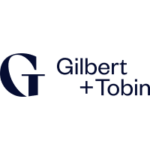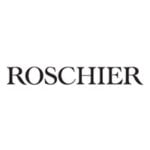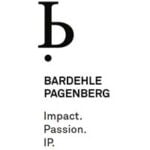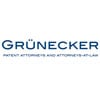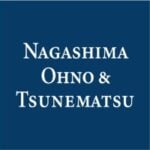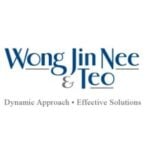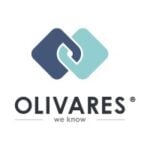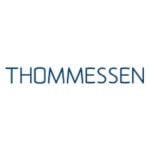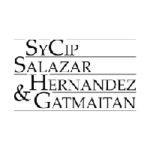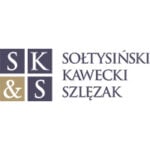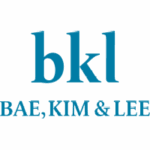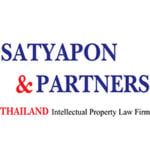-
What is the forum for the conduct of patent litigation?
Brazil adopts a bifurcated system for patent litigation. As a rule, patent infringement and declaratory non-infringement actions are filed before State Courts, unless the Federal Government is a co-defendant or has a clear legal interest in the case. Conversely, patent validity and invalidity actions must be filed before Federal Courts, as the Brazilian Patent and Trademark Office (BPTO) is a mandatory defendant due to the challenge of its administrative act.
Over the years, and in light of the complexity of such cases, several Brazilian courts have established specialized Trial Courts and Appeal Chambers to handle commercial and IP-related disputes. This is the case, for instance, of the Federal Courts of Rio de Janeiro (where the 9th, 12th, 13th, 25th, and 31st Federal Trial Courts, as well as the 1st and 2nd Specialized Panels, are dedicated to IP matters) and Brasília (where the 7th, 18th, and 22nd Federal Trial Courts, along with the 5th and 6th Specialized Panels, are similarly specialized).
A comparable approach has been adopted by State Courts, particularly in the states of Rio de Janeiro (where the 1st to 7th Business Trial Courts and the 1st, 7th, 19th, 22nd, and 24th Civil Chambers handle commercial and IP matters) and São Paulo (where the 1st and 2nd Business Trial Courts and the 1st and 2nd Business Chambers do the same). These courts concentrate the majority of patent infringement litigation in Brazil.
Brazilian procedural law also affords plaintiffs a degree of flexibility in venue selection. In infringement cases, plaintiffs may generally choose the venue based on their own or the defendant’s domicile, or the location where the infringing acts occurred, pursuant to Articles 46 and 53 of the Brazilian Civil Procedure Code.
In validity and invalidity actions filed before Federal Courts, plaintiffs typically opt to litigate in the states where the BPTO is headquartered—Rio de Janeiro or Brasília— both of which host experienced and specialized Federal IP courts. This venue selection strategy is commonly employed to ensure technical consistency and procedural efficiency in complex patent disputes.
Despite the specialization of these courts, local judges generally lack technical background and therefore rely heavily on court-appointed experts to assess technical matters. The absence of a jury system, combined with the presence of Specialized Courts and Chambers, contributes to a relatively predictable litigation environment for patent disputes in Brazil.
-
What is the typical timeline and form of first instance patent litigation proceedings?
Timeline. In Brazil, first-instance patent infringement cases typically take around two years to four years for a decision on the merits. However, this timeline can vary significantly due to: (i) case complexity – number of patents and court-appointed experts; (ii) court workload – heavier dockets slow progress; (iii) litigation strategy – frequent interlocutory appeals and aggressive tactics; and (iv) other procedural factors may also influence duration. Patent validity and invalidity cases tend to last at least three years, as the BPTO’s participation creates extended deadlines, due a prerrogative applicable to public administration bodies.
Form. As mentioned above, the Brazilian legal system is bifurcated: patent infringement and non-infringement cases are typically heard before State Courts, while patent validity and invalidity cases must be filed before Federal Courts, as the BPTO is a mandatory co-defendant.
Pleadings state. Litigation begins with filing and random assignment of the case to an authorized State court. Almost every case includes a request for an ex parte preliminary injunction (PI). After initial review, the judge may grant the PI, but most judges will allow the defendant a five-day deadline to submit a preliminary defense. The PI decision almost always triggers an interlocutory appeal—by either party—before the Court of Appeals, which does not suspend proceedings in the lower court. Once the defense is filed, plaintiff will be allowed to file a rebuttal, and than both parties will be allowed to submit a brief regarding evidence. After such initial pleadings the court will usually issue a case management decision defining the issues in the case and granting/rejecting on the requests by the parties regarding evidence production.
Evidence production: In the case management decision, the judge will also typically appoint a technical expert when technical evidence is requested or deemed essential— a scenario that occurs in most cases. Both parties may also appoint their own experts to interact with the court-appointed expert. In cases involving complex technologies or inventions spanning multiple technical fields, the judge may appoint more than one expert. The expert will answers technical questions from the judge and parties, gathers documents, and interviews individuals as needed, and in the end will prepare a report. The Court expert report is central to the court’s analysis; parties can comment, challenge, and seek clarifications. After this stage, the judge typically issues the final decision on the merits.
Damages. Patent infringement generally gives rise to compensation for material damages, such as lost profits or unpaid royalties, and moral damages (awarded whenever the infringement caused reputation damages to the patent owner). As to material damages, Article 210 of the Industrial Property Law (Law No. 9,279/96) provides that lost profits will be determined based on the criterion most favorable to the injured party, among the following: (i) the benefits that the injured party would have received if the violation had not occurred; (ii) the benefits that were obtained by the infringer; or (iii) reasonable royalties. In addition, Article 44 also ensures compensation for unauthorized use before the patent is granted. As to moral damages, although there is no statutory formula for moral damages, courts generally consider the severity of the infringing conduct, including evidence of willfulness; extent of harm caused; economic capacity of the infringer; among other factors. Brazilian law does not recognize punitive or exemplary damages in cases of patent infringement. There is no statutory or jurisprudential basis for enhanced damages linked to willful conduct.
Appeals. Appeals against interim and final decisions are heard by the State Court of Appeals, typically by a three-judge panel, with one acting as the Reporting Judge. Further review may be sought before the Superior Court of Justice (STJ) for violations of federal law, or before the Supreme Court (STF) for constitutional issues.
Further particularities. There a few particularities worth noting on Brazilian patent practice:
- When confronted with a PI, the Judge may require the plaintiffs to submit a bond to assure possible future compensation in case the PI is later revoked. Conversely, Judges may also accept a bond from defendants in specific scenarios, allowing them to continue the disputed acts until a final ruling on the merits. This procedural mechanism, which is not very common under patent cases in Brazil, is designed to mitigate the immediate disruptive effects of the injunction while preserving the defendant’s ability to maintain business operations pending a final decision on the merits.
- In both infringement and invalidity proceedings, issues of claim construction are not addressed in isolation, and are normally dealt with during the court- appointed expert’s examination. As mentioned, Brazilian courts tend to rely on court-appointed experts to assess technical matters, including claim interpretation, infringement analysis, and validity challenges;
- As also mentioned, Brazil has a bifurcated system, in which validity and invalidity cases are heard by Federal Trial Courts, while infringement and non- infringement cases are heard by State Trial Courts. Despite this, Brazilian law expressly allows the defendant to raise the patent’s invalidity at any time (Article 56, §1 of the IP Law), which is seen as a permission to raise the invalidity as a defense in infringement cases before State Courts. This has been many times raised before Courts, and the STJ (Special Appeal No. 1.843.507/SP and Divergence Special Appeal 1.332.417/RS) has in different oportunities considered that defendants may indeed raise the invalidity as a defense, and that this analysis is possible, even if the BPTO is not a party to that proceeding. In case the State Court finds that the patent is not valid, however, the effects of such decision will only be applicable between the parties and to establish the lack of infringement. The patent will remain valid and unforceable against third parties.
- Considering the bifurcated system, there is also a pending discussion on whether pending invalidity cases should lead to a suspension of the infringement cases, as if the first results in the patent’s revokal, it will have a clear effect on the latter. Such possibility is foreseen under Article 313, V, “a” of the Civil Procedure Code. Still, courts vary in their interpretation and application of this rule, with some denying staying requests on the grounds that the patent remains valid until annulled, and that suspending the infringement case would be a prize to possible infringer, as it would delay a possible conviction.
-
Can interim and final decisions in patent cases be appealed?
As mentioned above, it is possible to file appeals against both interim and final decisions issued by first and second level.
Appeals on interim decisions. As a rule, non-final decisions rendered by first instance Judges may be appealed through an interlocutory appeal, which must be filed 15 business days after the parties gains knowlegde of the decision. Such appeal will be heard by the respective State or Federal Court of Appeals. Such appeals will only be allowed when they are expressly foreseen in the procedural law (e.g., appeals against preliminary injunction decisions), or when there is a clear urgency that justifies the appeal being heard at that time, and not only when an appeal on the merits is heard.
After receiving the interlocutory appeal, the Court staff will assign it to a Rapporteur Appellate Judge, who may immediately grant a staying effect to suspend the effects of the challenged decision. On the same opportunity, the Rapporteur will likely summon the oposing party to file its counter-arguments within 15 business days. Once the filings are made, the Rapporteur will prepare his/her vote and request the Court staff to include the case in the Court’s agenda. Although not all interlocutory appeals will allow parties to submitt oral arguments, these will as a rule be analyzed by a Panel, normally of 3 Appellate Judges.
Although the procedural landscape in Brazil allows for different appeals, final decisions from the second instance in interlocutory appeals are normally challengeable through Special and Extraordinary appeals.
The Special Appeal is heard by the STJ and is limited to questions of federal law. The STJ does not re-examine facts or evidence, but ensures uniform interpretation and application of federal statutes, including the IP Law and the Civil Procedure Code. The Extraordinary Appeal, in turn, is heard by the STF and is restricted to constitutional matters. Both appeals are subject to strict admissibility requirements, including absence of factual controversy and exhaustion of prior remedies. In practice, interlocutory appeals challenging PI are rarely admitted at the STJ, as established by Precedent 735, which states that interlocutory decisions granting or denying preliminary injunctions are not subject to Special Appeal.
Timeline. Interlocutory appeals, including those challenging PI decisions, typically take 6 to 10 months to be heard by the Court of Appeals, although this may vary depending on the Court and the complexity of the appeal.
Appeals on final decisions. In its turn, final rulings of the merits from first instance Judges can be challenged through an appeal on the merits, to be filed within 15 business days after parties obtain knowledge of the decision.
Once the appeal is filed, the Judge will issue summons to the opposing party to submit its counter-arguments within 15-business-days. After that, the case is remitted to the Court of Appeals, where it is randomly assigned to a Rapporteur Appellate Judge (in case an interlocutory had been filed before, it will likely be the same Rapporteur). The appeal is then scheduled for judgment, and parties may present oral arguments during the hearing. As a rule, the appeal is decided by a panel of 3 Appellate Judges, but the quorum may be expanded in cases involving non-consensual decisions or requests for extended review.
After the appellate decision, parties may still seek review before the STJ or STF through Special or Extraordinary Appeals, subject to the same limitations and requirements previously described.
Timeline. Appeals on the merits tend to be heard within 10 to 14 months, although these rough estimates can be modified depending on the court and complexity of the case.
Importantly, first instance decisions, whether interim or final, may be enforceable pending appeal, but this it not automatic. While, a party that obtains a PI may request its enforcement immediately, even while the appeal is ongoing, permanent injunctions are not immediately enforceable by default. The prevailing party must request enforcement and the Judge may condition it on the absence of a staying effect granted by the Appellate Court. In practice, it is common for enforcement of final decision to be stayed until the appeal on the merits is analyzed by the respective Court of Appeals.
In conclusion, this appellate framework, which includes specialized panels, predictable timelines, and access to the STJ for legal harmonization, provides patent holders with robust and timely judicial protection. This reinforces Brazil’s position as a strategic jurisdiction for patent enforcement.
-
Which acts constitute direct patent infringement?
Direct patent infringement in Brazil occurs when a third party, without the patent holder’s consent, manufactures, uses, offers for sale, sells, or imports a product or process that falls within the scope of a granted patent. It also occurs when a party exports, sells, displays, offers for sale, stocks, conceals, or receives, for economic purposes, a product manufactured in violation of a patent or utility model, or obtained through a patented process. Additionally, infringement may arise from the importation of a product that is the subject of a patent or utility model, or obtained through a patented process in Brazil, for the aforementioned purposes, when such product has not been placed on the foreign market directly by the patent holder or with their consent.
-
Do the concepts of indirect patent infringement or contributory infringement exist? If so, what are the elements of such forms of infringement?
Under Brazilian IP Law (Articles 42, §1, and 185), a patent holder may also enforce its rights against parties that contribute to infringing activities committed by third parties. Contributory infringement may involve any person who takes actions that assist in the infringement, particularly by supplying components, materials, or equipment that necessarily lead to the exploitation of the patented invention.
Moreover, Brazilian courts have issued decisions recognizing indirect infringement in cases where the alleged infringer facilitates or enables another party to commit infringing acts, such as through importation or distribution.
-
How is the scope of protection of patent claims construed?
Under Article 41 of the IP Law, the patent’s protection scope is defined, as a rule, by the claims, which must be interpreted in light of the specification and drawings.
Further, Article 186 of the same statute provides that that infringement may occur even when the violation involves the use of “equivalent means” to the patented invention. Despite its statutory recognition, Brazilian law does not define what constitutes “equivalent means”, leaving room for judicial interpretation. To address this, there are, at least, four- step tests inspired by comparative law, particularly U.S. and European standards that can be used:
- First, the analysis begins with a comparison between the allegedly infringing product or process and each element of the patent’s claims. If all elements coincide, literal infringement is established. If not, the test continues to evaluate whether the differing elements are equivalent.
- Second, equivalence can be assessed using the function-way-result test, derived from U.S. case law. Under this test, an element is considered equivalent if it performs substantially the same function, in substantially the same way, to achieve substantially the same result.
- Third, the test considers whether the use of the equivalent element would have been obvious to a person skilled in the art at the time of the infringement. This step ensures that the alleged infringing product is not itself novel and non-obvious, which could potentially be patentable and thus not infringing.
- Fourth, although Brazilian law does not formally adopt the doctrine of prosecution history estoppel, a similar limitation arises from general principles of civil law, such as good-faith and prohibition of a contradictory behavior. If, during the prosecution of the patent, applicants amended the claims to exclude certain elements, whether voluntarily or in response to technical objections, those elements are considered surrendered. This may be considered when applying the doctrine of equivalents.
-
What are the key defences to patent infringement?
The main defense strategy is to demonstrate the lack of infringement, showing that the allegedly infringing product or process does not implement all the steps of the patent’s set of claims (i.e., all elements rule).
In cases involving process patents, a key defense is to demonstrate that the allegedly infringing product was obtained through a process that is materially distinct from the patented one. It is worth noting that Article 42, sole paragraph, of the Brazilian IP Law provides for a reversal of the burden of proof in such cases, but only upon a substantiated showing by the patentee that the product is identical to the one directly obtained through the patented process.
Furthermore, as previously mentioned, the IP Law allows patent invalidity to be raised as a defense at any time (Article 56, §1), which is interpreted as a valid defense in infringement proceedings. There has been longstanding debate over the admissibility of incidental invalidity arguments raised in infringement cases before State Courts, i.e., without the BPTO being heard. However, recent decisions from the STJ have confirmed the admissibility of such arguments.
In addition, the alleged infringer retains the right to file a standalone invalidity action before the Federal Courts at any time during the patent term, regardless of whether an incidental invalidity defense has been raised in the infringement proceedings.
Finally, prior user rights, as set forth in Article 45 of the IP Law, may also serve as a defense. This provision protects individuals or entities that, in good faith, were already exploiting the patented invention prior to the patent application’s filing date.In addition to above, the following conducts are considered under the IP Law not to be patent infringement acts (Article 43):
- acts practiced by unauthorized third parties, in a private manner and without commercial purposes, provided that no economic harm is caused to the patent holder;
- atcs practiced by unauthorized third parties, on an experimental basis, related to scientific or technologic research;
- preparation of medicines (and the resulting product) in accordance with medical prescription for individual cases, executed by a skilled professional;
- a product manufactured in accordance with a product or process patent that has been placed in the commercial market directly by the patent holder or with its consent;
- use by third parties of patented products as an initial source of propagation, in case of patents related to living material, without an economic purpose;
- use, circulation, or commercialization by third parties, in the case of patents related to living material, of a patented product that has been lawfully placed on the market by the patentee or by a licensee, provided that the patented product is not used for the commercial multiplication or propagation of the living material in question; and
- acts practiced by unauthorized third parties whose purpose is exclusively the production of information, data and results of tests, to obtain marketing approval in Brazil or another country, for the exploitation of the product covered by the patent after the patent’s exclusivity term has expired (Bolar exemption).
On some of the points above, it is worth mentioning that on the allowance for the preparation of medicines (and the resulting product) in accordance with medical prescription for individual cases, executed by a skilled professional, there are different rulings establishing this does not allow the importation of pharmaceutical inputs intended for future magistral preparations.
Also, in Brazil, there are different cases filed by patent holders in connection with the Partnerships for Productive Development (PDP) Program, a government initiative aimed at transferring pharmaceutical manufacturing technology to state-owned laboratories. Courts considered that offers for sale or regulatory steps taken under PDPs, such as obtaining marketing authorization or GMP certificates, could constitute imminent infringement when they necessarily lead to commercialization before the patent term ends. These precedents affirm that the Bolar exemption does not shield activities that go beyond mere data generation and approval-seeking, especially when they signal a clear intent to exploit the patented product prematurely.
-
What are the key grounds of patent invalidity?
Grounds for invalidity include:
- Non-patentable subject matter.
- Lack of novelty.
- Lack of inventive step.
- Insufficient disclosure or lack of support of the patent’s claims in the specification.
- Added subject-matter prohibition, which relates to the inclusion of subject matter in the scope of the claims after the examination request was made during prosecution.
- Double patenting, which leads to the nullity of one of the patents.
-
How is prior art considered in the context of an invalidity action?
In Brazil, prior art plays a central role in invalidity actions, particularly when assessing lack of novelty and lack of inventive step (obviousness). Prior art encompasses all information made available to the public before the priority date, whether through written or oral disclosure, use, or any other means. This includes publications, patents, public demonstrations, and commercial use, both in Brazil and abroad.
For the purpose of assessing obviousness, Brazilian courts and the BPTO may combine multiple prior art references, provided that such combination would be obvious to a person skilled in the art. However, when the alleged lack of inventive step relies on a complex mosaic of documents, each contributing only partial aspects of the claimed invention, this may indicate that the invention is not obvious. The need to piece together multiple sources to reconstruct the invention suggests that it would not have been readily apparent to a skilled person at the relevant date.
With respect to novelty, a single prior art reference must disclose all elements of the claimed invention; combinations of references are not permitted.
Despite the general rules above, the IP Law also provides two specific determinations on prior art evaluation:
- Article 11, §2º of the IP Law introduces that, for the purpose of assessing novelty, the full content of a patent application filed in Brazil but not yet published, is considered part of the prior art as of its filing or priority date, provided it is eventually published. Its content will only considered for assessing novelty, not inventive step.
- Article 12 of the IP Law establishes a 12-month grace period prior to the filing or priority date, during which disclosures made by the inventor, the BPTO, or third parties based on information from the inventor are not considered prior art. The BPTO tends to interpret this provision as primarily benefiting small inventors, although this position is often not supported by Courts.
Further, there is also an ongoing debate in Brazilian case law regarding the scope of the court- appointed expert’s analysis in judicial proceedings. Specifically, whether the expert should be limited to examining prior art documents submitted by the parties and the BPTO in the complaint and defense, or whether they are permitted to conduct independent searches.
While some decisions emphasize the adversarial nature of civil proceedings, suggesting that the expert’s analysis should be restricted to the evidence presented by the parties, others recognize the expert’s technical autonomy to identify and consider relevant prior art beyond the case file, particularly when such searches are necessary to form a well-founded technical opinion.
-
Can a patentee seek to amend a patent that is in the midst of patent litigation?
Yes. These kind of amendments/apostilles will often result from a counterclaim or request made by the patent owner in a defense against patent invalidity before Courts or in a administrative nullity proceedings before the BPTO.
Judicial Decisions
When a court rules on the validity or interpretation of a patent during litigation, the Brazilian Patent and Trademark Office (BPTO) may issue an apostilamento (apostille) to reflect the court’s decision. This may result in a narrowed scope of protection if certain claims are invalidated or interpreted restrictively.
Administrative Nullity Proceeding
If the BPTO conducts an administrative nullity procedure and determines that specific claims are invalid or require restriction, the patent will be endorsed accordingly. This process follows established guidelines, including Ordinance No. 10/2024, which governs appeals and nullity requests.
However, those amendments will always be restrictive.
Indeed, Brazilian Patent Law does not provide a mechanism equivalent to the U.S. broadening reissue application that allows a patent owner to expand the scope of claims after grant. Article 32 of the Industrial Property Law (Law No. 9,279/96) and Rule No. 93/2013 of the Brazilian Patent and Trademark Office (BPTO) establish that amendments to claims are permitted only during prosecution and must remain within the subject matter originally disclosed in the application. Once the request for examination has been filed, amendments are limited to clarifications, correction of translation errors, or restrictions of the scope of protection. Broadening amendments are expressly prohibited after this stage.
The only related mechanism is the certificate of addition provided under Article 76 of the IP Law. This allows the applicant or patent holder to request, upon payment of a specific fee, protection for an improvement or development introduced into the invention, even if it lacks inventive step, provided that the improvement falls within the same inventive concept. The certificate of addition is an accessory to the patent, has the final validity date of the patent and accompanies it for all legal purposes.
-
Is some form of patent term extension available?
Brazil does not have formal mechanisms for Patent Term Extension (PTE), Patent Term Adjustment (PTA), or Supplementary Protection Certificates (SPC).
Note, however, that in 2021, the STF declared unconstitutional the provision that allowed a minimum 10-year exclusivity term counted from the patent grant date (ADI 5.529), in cases where the BPTO took more than 10 years to complete the examination. The ADI challenged what was perceived as an undue extension of the patent term due to administrative delays, arguing that such provision effectively authorized the perpetuation of exclusive rights over patented technologies.
Following this ruling, several patent holders filed lawsuits seeking term extensions based on the Law of Introduction to the Brazilian Legal System (LINDB), particularly Article 27, which requires public authorities to consider the practical consequences of their decisions and the economic and social impacts of administrative delays. In these cases, patent holders argue that delays by the BPTO and ANVISA (the Brazilian FDA, which previously played a role in the examination of certain patent applications) caused harm to companies, which should be compensated through a patent term adjustment proportional to the delay.
Currently, dozens of lawsuits involving patent term extensions are pending, and the matter remains open in Brazilian case law.
-
How are technical matters considered in patent litigation proceedings?
In Brazil, technical matters in patent litigation are primarily addressed through expert evidence.
Parties may submit technical and legal opinions to support their claims regarding infringement or validity/invalidity. expert opinions play a significant role in Brazilian patent litigation and can, in certain circumstances, prevent the issuance of a preliminary injunction.The credibility of the expert is critical; selecting professionals affiliated with respected Brazilian federal universities is strongly recommended. Opinions from such experts may influence both the Court and the Court-appointed expert, thereby strengthening the defendant’s arguments and increasing the likelihood of a favorable expert report and a positive judgment on the merits. Additionally, expert opinions can serve as evidence of good faith, helping to counter allegations of bad faith and potentially reducing the amount of moral damages awarded.
Judges will also reply on experts, appointing a court expert of their trust, with the necessary technical expertise, to provide an independent analysis of the case. Once expert evidence is deemed necessary, the parties may nominate their own technical assistants, who will interact with the court-appointed expert, and submit specific questions to be addressed.
After completing the analysis, the court expert submits a written opinion. The parties may respond to this report, either by agreeing with or challenging its conclusions, and may also submit follow-up questions. It is possible to request that the expert attend a court hearing to provide clarifications.
Once all clarifications have been made, the judge may accept the expert’s opinion or appoint a new expert to conduct a fresh analysis. Importantly, the court expert’s opinion is not binding, and the judge retains full discretion to decide the case independently. However, judicial decisions tend to give significant weight to the scope and content of the expert’s examination.
-
Is some form of discovery/disclosure and/or court-mandated evidence seizure/protection (e.g. saisie-contrefaçon) available, either before the commencement of or during patent litigation proceedings?
Search and seizure orders are permitted under Brazilian procedural law and are typically granted at the outset of proceedings, provided that the requirements for preliminary injunctions (i.e., likelihood of success on the merits and risk of irreparable harm) are met.
Brazilian law does not provide for a discovery process similar to that of the United States. However, parties may request the production of specific documents or information from the opposing party during the evidentiary phase.
To ensure compliance with court orders for evidence production, Brazilian courts may adopt coercive measures, such as daily fines (astreintes), seizure of documents or goods, among others.
Additionally, under the general rule of the Brazilian Code of Civil Procedure, courts may shift the burden of proof when a party that is in a better position to produce certain evidence fails to do so without justification. This mechanism serves as an important procedural tool to prevent strategic withholding of evidence and to ensure a fair distribution of the burden of proof.
-
Are there procedures available which would assist a patentee to determine infringement of a process patent?
Brazilian law provides mechanisms to assist patentees in proving infringement of process patents. One such mechanism is the reversal of the burden of proof, as set forth in Article 42, §2, of the IP Law, which allows the owner of a patented process to request that the alleged infringer demonstrate that the disputed product was obtained through a different process. This rule aligns with Article 34 of the TRIPS Agreement, which also provides for a reversal of the burden of proof in cases of process patent infringement, recognizing the inherent difficulty patentees face in proving how a product was manufactured by a third party.
Consistent with both domestic and international standards, Brazilian courts may also order defendants to disclose information or documents related to the manufacturing process, provided that the request is specific and properly justified.
-
Are there established mechanisms to protect confidential information required to be disclosed/exchanged in the course of patent litigation (e.g. confidentiality clubs)?
Brazilian courts recognize the need to protect confidential information disclosed during litigation. While there is no formal system of “confidentiality clubs” as seen in some jurisdictions, courts may adopt protective measures to safeguard sensitive data. These measures include restricting access to certain documents to the parties and their legal representatives, sealing portions or the entirety of the case file, and issuing confidentiality orders.
Such mechanisms are typically implemented upon request and tailored to the nature of the confidential information involved. The objective is to balance the principle of transparency in judicial proceedings with the protection of proprietary and commercially sensitive information.
-
Is there a system of post-grant opposition proceedings? If so, how does this system interact with the patent litigation system?
Brazil has a Post-Grant Opposition (PGO) system governed by Article 31 of the IP Law. A PGO may be filed before the BPTO within six months from the date of patent grant. The patentee is entitled to submit a reply, and both parties may comment on the intermediate opinion issued by the BPTO before a final administrative decision is rendered.
PGO proceedings do not preclude the filing of invalidity actions before the Federal Courts. However, if the BPTO subsequently decides to revoke the patent, the judicial case will likely become moot.
Importantly, PGOs do not suspend the enforcement of patent rights. Brazilian courts have consistently held that the existence of a pending PGO does not prevent the patentee from asserting its rights in court.
-
To what extent are decisions from other fora/jurisdictions relevant or influential, and if so, are there any particularly influential fora/jurisdictions?
Brazilian courts may consider foreign decisions as persuasive authority, but they do not defer to them. Foreign judgments have no binding effect in Brazilian patent litigation.
In cases where no domestic precedent exists, it is common for courts to refer to foreign decisions for guidance, particularly from jurisdictions with well-established patent systems. Nonetheless, Brazilian judges apply national law exclusively, and the interpretation of statutes and constitutional provisions remains within the sole purview of the Brazilian judiciary.
Additionally, in cases involving foreign equivalents of the patents in suit, courts may examine the prosecution history and decisions from other jurisdictions to inform their understanding of the facts.
-
How does a court determine whether it has jurisdiction to hear a patent action?
Jurisdiction in Brazilian patent litigation is defined by the nature of the claim and the parties involved. Infringement and declaratory non-infringement actions are filed before State Trial Courts, while validity and invalidity actions are filed before Federal District Courts.
Brazilian courts do not adjudicate foreign patents, and anti-suit injunctions are not available under Brazilian law. The judiciary does not interfere with proceedings in foreign jurisdictions, nor does it issue protective letters or conduct preliminary reviews of validity.
This principle has been tested in cases involving SEP/FRAND disputes, where Brazilian judges have consistently treated patent enforcement as a matter of constitutional protection. Courts do not recognize foreign interim licenses or anti-suit mechanisms as grounds to suspend local proceedings. In fact, the Brazilian judiciary remains focused on the domestic adjudication of patent rights, independent of litigation strategies pursued abroad.
-
What are the options for alternative dispute resolution (ADR) in patent cases? Are they commonly used? Are there any mandatory ADR provisions in patent cases?
In Brazil, parties involved in patent disputes may resort to alternative dispute resolution (ADR) mechanisms, although there are currently no mandatory ADR provisions applicable to patent litigation. The decision to pursue ADR remains entirely at the discretion of the parties.
Arbitration is available as an out-of-court method for resolving patent-related disputes. However, because it requires mutual consent, typically established through a prior contractual clause, such as in a patent licensing agreement, it is less common in practice. Mediation is also rarely used in patent cases in Brazil.
-
What are the key procedural steps that must be satisfied before a patent action can be commenced? Are there any limitation periods for commencing an action?
To initiate a patent infringement action in Brazil, the patent must first be granted and in force. Strategic pre-filing measures, such as evidence gathering, infringement mapping, and expert engagement, are essential to building a robust and enforceable case. The complaint must include all available evidence at the time of filing, which is critical not only for the merits of the case but also for any PI request.
Regarding statutes of limitations, Article 225 of the IP Law establishes a five-year limitation period for claiming damages resulting from patent infringement, counted from the date the right holder becomes aware of the violation. Case law generally interprets this provision as limiting the recovery of damages, rather than the filing of the lawsuit itself, especially considering that ongoing infringement is often viewed as a continuous violation, which may renew the limitation period with each occurrence.
-
Which parties have standing to bring a patent infringement action? Under which circumstances will a patent licensee have standing to bring an action?
Under Brazilian law, the patent holder has standing to bring an infringement action. Additionally, both exclusive and non-exclusive licensees may initiate proceedings, provided they are contractually authorized to enforce the patent rights. This may include entities such as distributors or patent pools acting on behalf of multiple licensors.
The Brazilian judiciary has recognized the legitimacy of patent pools in enforcing SEPs against unwilling licensees. These pools have successfully obtained preliminary injunctions and driven settlements, even in cases where formal ownership of the patents lies with individual licensors. This reflects a pragmatic approach adopted by Brazilian courts.
-
Who has standing to bring an invalidity action against a patent? Is any particular connection to the patentee or patent required?
Under Brazilian law, any party with a legitimate interest may file a patent invalidity action before the Federal Courts. This includes competitors, potential market entrants, industry associations, and other stakeholders whose activities are affected by the exclusivity granted by the patent.
No contractual, legal, or ownership connection to the patentee or the patent is required. The threshold for standing is practical and objective: if the patent poses a legal or commercial obstacle to the party’s operations, enforcement, or market access, courts will generally recognize standing. This broad access to judicial review reflects Brazil’s commitment to balancing innovation incentives with market competition and ensures that invalid patents can be challenged efficiently and effectively.
-
Are interim injunctions available in patent litigation proceedings?
Interim injunctions are available and commonly sought in Brazilian patent related cases. The IP Law (Article 209) and the Civil Procedure Code (Article 300) provide statutory authority for interlocutory relief, including PIs.
PIs may be granted ex parte in urgent scenarios, especially when there is a risk of irreparable harm. These decisions are normally rendered a few hours or days after the request is made. Courts typically assess three key factors:
- likelihood of success on the merits (i.e., probability of infringement being determined on the merits decision), which normally takes into acccount whether the infringement is evident, the complexity of the matter and the scope of the evidence gathered by the Plaintiff, which normally includes technical affidavits and other supporting evidence to sustain the infringement claim;
- urgency (imminent or ongoing harm), such as wether the infringing product is about to be launched or has been in the market for a relevant time period, whether the removal from the market may affect third parties or even shut down alleged infringer’s activities, etc. and;
- absence of risk of irreversibility, i.e., whether the effects of the measures may be reversed in case the PIs is later revoked.
Judges may also consider the balance of hardships between the parties.
The likelihood of success on having an ex parte PI granted will highly depend on the case’s particularities. Despite that, different Courts tend to have a more cautious approach, and may request defendants are heard in a short period of time, to allow an adversary proceeding before a decision is rendered.
Courts may require the patent holder to provide a monetary bond or fiduciary guarantee before granting the PI, particularly when the relief could significantly impact the defendant’s commercial operations.
-
What final remedies, both monetary and non-monetary, are available for patent infringement? Of these, which are most commonly sought and which are typically ordered?
Final remedies include both monetary and non-monetary relief. Non-monetary remedies primarily consist of permanent injunctions, which are routinely granted upon confirmation of infringement. Courts may also issue exclusion orders, search and seizure orders of infringing products, destruction orders, all combined with heavy fines in case of non-compliance.
Monetary remedies include compensation for material (actual damages and loss profits) and reputational damages, as indicated before.
-
On what basis are damages for patent infringement calculated? Is it possible to obtain additional or exemplary damages? Can the successful party elect between different monetary remedies?
Material damages in patent cases include actual damages and loss profits. Loss profits are calculated based on the following criteria, whichever is most favorable to the patent holder, pursuant to Article 210 of the IP Law:
- benefits that would have been obtained by the patent holder if the infringement had not occurred;
- benefits obtained by the infringing party; or
- compensation that the infringing party would have paid to the patent holder for a license.
Additionally, as mentioned above, Courts consider that infringement acts lead to in re ipsa reputational damages.
While Brazilian law does not formally recognize punitive or exemplary damages, case law is consistent in considering in the reputational damages compensation a punitive part, although amounts are not as high as in United States litigation, for instance.
-
How readily are final injunctions granted in patent litigation proceedings?
Final injunctions are readily granted in Brazil once infringement is established. Injunctions typically prohibit the manufacture, use, sale, importation, and advertising of infringing products. They may also extend to acts such as offering for sale, exporting, concealing, stocking, or receiving products for economic purposes when such products are manufactured in violation of a patent or obtained through a patented process. Additionally, injunctions may cover the importation of patented products or products obtained through a patented process in Brazil, when such products have not been placed on the foreign market directly by the patent holder or with their consent. Carve-outs or exemptions may be considered in very exceptional cases, such as public health emergencies or when the infringing product serves a critical public function. However, this would be extremely exceptional under Brazilian practice.
-
Are there provisions for obtaining declaratory relief, and if so, what are the legal and procedural requirements for obtaining such relief?
Declaratory relief is available under Brazilian law. Parties may seek declarations of non- infringement, as per Article 19, I of the Civil Procedure Code. Preliminary injunctions may also be requested within declaratory lawsuits to protect the implementer’s right to continue manufacturing, selling, etc. its products.
Moreover, in ICT/SEP cases, different implementers have sought declarations regarding the essentiality of patents to technical standards.
While Brazil does not have a direct equivalent to the UK’s Arrow declarations, declaratory judgments serve a similar purpose in clarifying legal positions and mitigating enforcement risks.
-
What are the costs typically incurred by each party to patent litigation proceedings at first instance? What are the typical costs of an appeal at each appellate level?
This will highly depend on the complexity of the case and on the size of the players. In rough amounts, infringement or validity cases may cost from US$30,000 (in a straightforward case) to over US$1,000,000, in more complex cases, before a decision on the merits is rendered in the first instance. This includes pre-litigation strategy, preliminary injunction proceedings, gathering of evidence and hiring of experts, court appointed expert’s examination phase, etc.
Appeals can roughly range from US$ 50,000 to US$ 500,000 depending on the complexity and scope of the case.
-
Can the successful party to a patent litigation action recover its costs?
The successful party may recover legal costs, but recovery is generally limited. Recoverable costs include court fees, including those paid to court appointed expert’s fees and to technical assistants, as per Article 84 of the Code of Civil Procedure. While security for costs is not a standard requirement in Brazilian litigation, it may be ordered in specific circumstances .
-
What are the biggest patent litigation growth areas in your jurisdiction in terms of industry sector?
The most dynamic growth area in Brazilian patent litigation is the ICT sector, particularly involving Standard Essential Patents (SEPs) and video/audio coding technologies. Brazil has become a strategic jurisdiction for global enforcement projects due to its specialized IP courts, high success rates in PIs, and the absence of procedural barriers such as protective letters or anti-suit injunctions.
Moreover, pharmaceutical patent litigation remains a highly active field, particularly in disputes involving biosimilars, regulatory exclusivity, and claims for patent term externsion. The intersection between IP and regulatory frameworks continues to be a fertile ground for enforcement, especially in cases concerning skinny labeling and the renewed implementation of the Partnerships for Productive Development (PDP) Program.
The agrochemical sector also is emerging as a litigation frontier, particularly in cases involving biotechnology patents and regulatory data protection. Brazil’s large agricultural economy and the strategic importance of crop protection technologies have led to increased enforcement activity and policy scrutiny.
-
What do you predict will be the most contentious patent litigation issues in your jurisdiction over the next twelve months?
- Enforcement of Standard Essential Patents (SEPs) against unwilling licensees, particularly in the context of hold-out strategies and global licensing disputes. Brazilian Courts have become a preferred venue for SEP owners.
- Use of simplified court expert reports in ICT and SEP disputes, which, although controversial, are being granted by specific Judges. Given the technical nature of patent litigation, this approach may be challenged by defendants for lacking sufficient depth. Nonetheless, when accepted, simplified expert evidence can expedite proceedings and serve as a strategic tool to pressure potential infringers toward settlement.
- Antitrust scrutiny of SEP enforcement, with the Brazilian Antitrust Authority (CADE) increasingly involved in cases. Industry lobbying efforts, particularly by groups advocating for compulsory licensing and limits on injunctive relief, are expected to intensify, potentially influencing enforcement dynamics.
- Continued litigation over Patent Term Adjustment (PTA) in the pharmaceutical sector. These lawsuits, which seek judicially induced compensation for administrative delays in patent examination, are likely to remain a contentious issue.
-
What are the biggest challenges and opportunities confronting the international patent system?
Challenges:
- Anti-enforcement measures, such as anti-suit injunctions (ASIs) and interim licenses, increasingly used by implementers to block SEP enforcement in foreign jurisdictions, raising sovereignty and jurisdictional concerns.
- Fragmentation of FRAND adjudication, with courts in different countries applying divergent standards and interpretations, complicating global licensing strategies.
- Political and lobbying pressures, particularly in emerging markets, where national industry groups advocate for anti-patent policies, compulsory licensing, etc.
Opportunities:
- Judicial specialization and predictability, as seen in Brazilian IP-specialized courts, which offer efficient and consistent adjudication, making the jurisdiction attractive for global enforcement.
- Interim licensing models, such as interim licenses granted during litigation, which can balance enforcement with market access and reduce litigation risks.
- Data-driven litigation strategies, leveraging comprehensive databases and analytics to anticipate outcomes and optimize enforcement.
- Global coordination of enforcement, with Brazil playing a pivotal role in multi- jurisdictional licensing and litigation campaigns, especially in ICT and pharma.
Brazil: Patent Litigation
This country-specific Q&A provides an overview of Patent Litigation laws and regulations applicable in Brazil.
-
What is the forum for the conduct of patent litigation?
-
What is the typical timeline and form of first instance patent litigation proceedings?
-
Can interim and final decisions in patent cases be appealed?
-
Which acts constitute direct patent infringement?
-
Do the concepts of indirect patent infringement or contributory infringement exist? If so, what are the elements of such forms of infringement?
-
How is the scope of protection of patent claims construed?
-
What are the key defences to patent infringement?
-
What are the key grounds of patent invalidity?
-
How is prior art considered in the context of an invalidity action?
-
Can a patentee seek to amend a patent that is in the midst of patent litigation?
-
Is some form of patent term extension available?
-
How are technical matters considered in patent litigation proceedings?
-
Is some form of discovery/disclosure and/or court-mandated evidence seizure/protection (e.g. saisie-contrefaçon) available, either before the commencement of or during patent litigation proceedings?
-
Are there procedures available which would assist a patentee to determine infringement of a process patent?
-
Are there established mechanisms to protect confidential information required to be disclosed/exchanged in the course of patent litigation (e.g. confidentiality clubs)?
-
Is there a system of post-grant opposition proceedings? If so, how does this system interact with the patent litigation system?
-
To what extent are decisions from other fora/jurisdictions relevant or influential, and if so, are there any particularly influential fora/jurisdictions?
-
How does a court determine whether it has jurisdiction to hear a patent action?
-
What are the options for alternative dispute resolution (ADR) in patent cases? Are they commonly used? Are there any mandatory ADR provisions in patent cases?
-
What are the key procedural steps that must be satisfied before a patent action can be commenced? Are there any limitation periods for commencing an action?
-
Which parties have standing to bring a patent infringement action? Under which circumstances will a patent licensee have standing to bring an action?
-
Who has standing to bring an invalidity action against a patent? Is any particular connection to the patentee or patent required?
-
Are interim injunctions available in patent litigation proceedings?
-
What final remedies, both monetary and non-monetary, are available for patent infringement? Of these, which are most commonly sought and which are typically ordered?
-
On what basis are damages for patent infringement calculated? Is it possible to obtain additional or exemplary damages? Can the successful party elect between different monetary remedies?
-
How readily are final injunctions granted in patent litigation proceedings?
-
Are there provisions for obtaining declaratory relief, and if so, what are the legal and procedural requirements for obtaining such relief?
-
What are the costs typically incurred by each party to patent litigation proceedings at first instance? What are the typical costs of an appeal at each appellate level?
-
Can the successful party to a patent litigation action recover its costs?
-
What are the biggest patent litigation growth areas in your jurisdiction in terms of industry sector?
-
What do you predict will be the most contentious patent litigation issues in your jurisdiction over the next twelve months?
-
What are the biggest challenges and opportunities confronting the international patent system?
